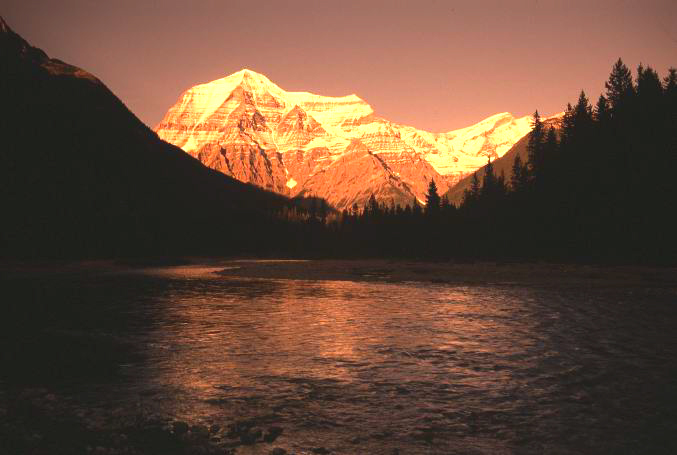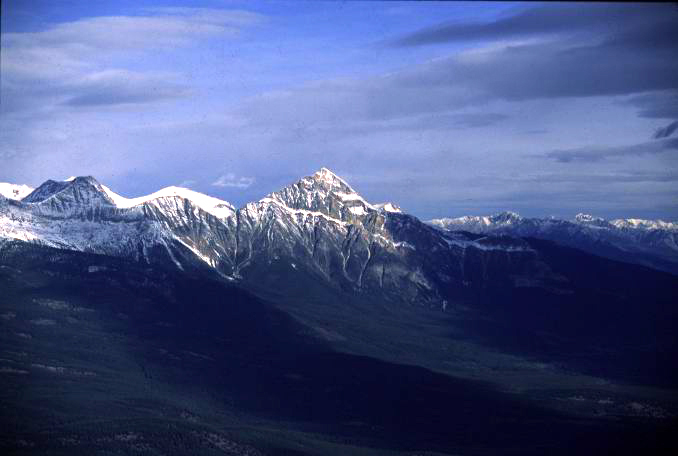
Wild
about Wildlife in
Jasper
National Park
By
Jim Moerschel
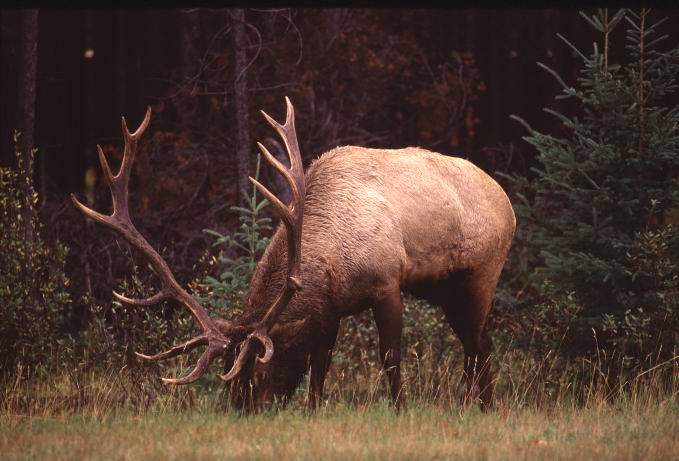
Established in 1907, Jasper National Park comprises 4200
square miles of some of
the most stunning wilderness scenery in the world. It is the largest and
most northern of
Canada’s Rocky Mountain Parks and is part of the World heritage
Site. In this region,
the traveler can view shimmering glaciers, crystal clear lakes, towering
waterfalls, deep
canyons, thick forests and the very abundant wildlife. Here one can see
Grizzly Bears,
black bears, Moose, Caribou, Big Horn sheep, Mountain goats, coyotes,
deer and the large herds of elk.
Most tourists visit the Canadian Rockies in summer.
The towns are bustling with people, lodging is high and
the wildlife is back in the high country, especially the elk. This
is not to say that you won’t see wildlife during the summer season.
You will. But the
autumn season is a very good time to pay a visit to Jasper – especially
to see lots of animals.
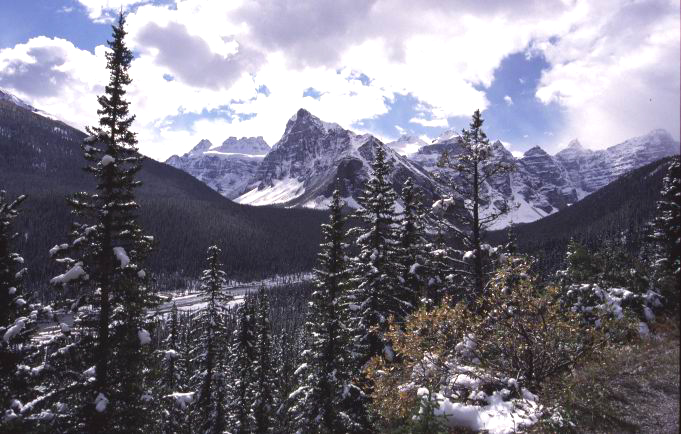
A few years ago, I teamed up with adventure photographer, Phil Maranda,
who lives
in the Canadian Rockies to conduct a photo adventure tour in Jasper National
Park. When we were discussing the best time to do the tour, Phil didn’t
hesitate about setting a date. The

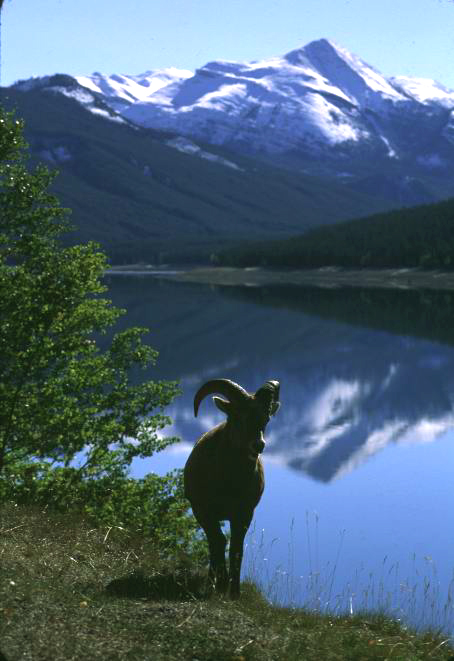
first week in October was his choice. Phil has photographed Jasper for
several years and knows all the back roads, the places where the animals
are likely to be found and what time
of year is most productive to see animals – up close.
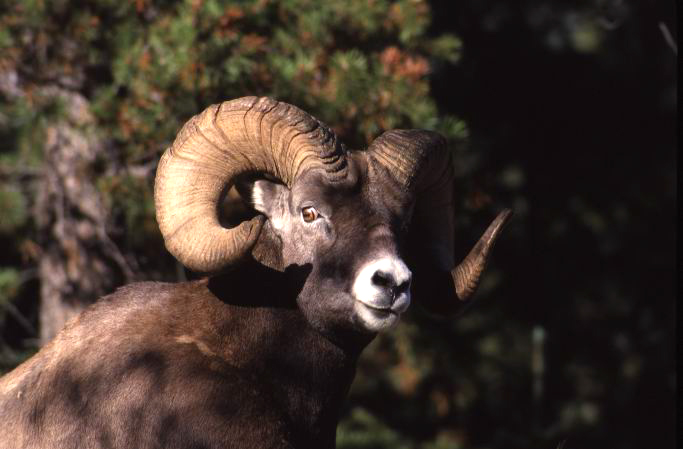
So, we quickly agreed to lead the trip that first week in October. Tourism
would be
light, rates at the lodges would be lower, the aspen trees would be at
peak color and most
importantly the animals would be down out of their summer range high in
the mountains.
As a matter of fact, the elk come to town. We saw herds of them across
the street from our
lodge. They were seen grazing on the edge of town and we even saw a Buck
chase a doe
right down the sidewalk as we were eating our evening meal in a downtown
restaurant.
The town of Jasper is set amidst some of the most breathtaking mountain
scenery
anywhere. At this time of year the jagged peaks are coated with snow contrasting
nicely
with the lush green pines and spruces that cover the valleys and slopes.
On the edge of
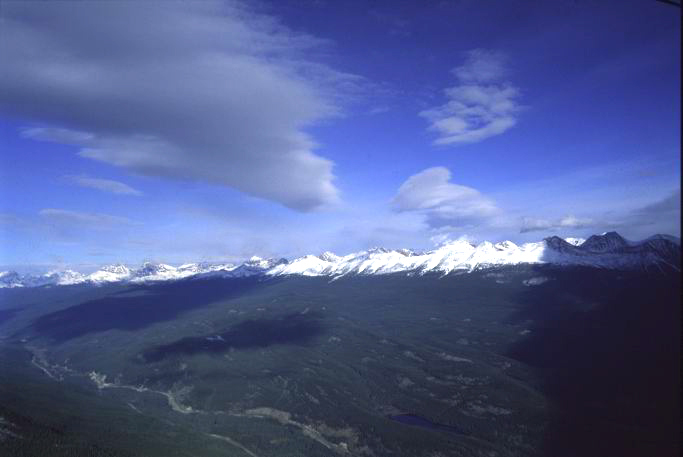
town there are several creeks and rivers that meander through the valley,
some displaying
the most brilliant turquoise color one has ever seen. These are the glacier
fed streams
whose minerals give the water this wonderful hue.
I arrived in Calgary several days early than the tour was planned, met
Phil at the
airport and we were off on adventure. We drove up to Banff, where we camped
for two nights besides the Bow River near the town of Canmore. It snowed
lightly one night and we awoke

to a winter wonderland. Shunning breakfast, the two of us hiked around
the campground
with cameras and tripods capturing the magic of early light upon freshly
fallen snow.
Then it was time to make the drive up to Jasper and do some scouting before
the tour
was to begin. We stopped at lake Louise, one of the most beautiful lakes
in the Canadian
Rockies. Surrounded by magnificent peaks this jewel is very photogenic,
glistening its
turquoise surface for our cameras. The drive from Lake Louise north to
Jasper is awe-
inspiring. We drove by several lakes with Aspen trees reflecting their
autumn beauty upon
the mirror surfaces. But, the most significant scenery is the towering
mountains that dominate the terrain.
It was so tempting to stop for picture taking around every
bend,
but we were on a mission to scout all around the town of Jasper and the
National Park,so we pressed on.
After a good nights sleep, we drove out of town before dawn and took some
side
roads near the park boundary. A few miles off the beaten path we spotted
two coyotes
hunting along the edge of the road. At first we were hesitant to get out
of the car, figuring
the two would leave the grassy area and race back into the thick forest
for cover. After
a few minutes watching these two stalk rodents, we decided to quietly
slip out of the car
on the side opposite our determined hunters and set up our tripods and
cameras with long
telephotos. Mine was a 400mm lens on my Nikon N90s. Fuji velvia, ISO 50
was in the
camera and when both of us were ready, we silently walked into the grassy
field.
To our surprise, the two coyotes kept right on stalking prey and paid
little attention
to us. Oh, they knew exactly where we were alright, but we were able to
move in close, real
close at times and get some very nice images of them. At one point, I
was standing 30 feet away and the animals just kept on hunting. Phil and
I never uttered a word during the entire 40 minute session. All we could
hear were the clicks of shutters and the whirring
sound of the cameras advancing or rewinding rolls of “36.”
Then, suddenly the two furry
hunters had caught their fill of field mice for the morning and simply
trotted off for the
seclusion of the deep woods. Phil and I walked to the car and drove off
looking for othersubjects, still amazed at our good luck.
The landscape scenery in the Canadian Rockies is photogenic all day long.
Even during
midday great landscapes are all around. Use the polarizer filter and select
a strong composition and “presto” a dynamic image can be made
here. The clouds that are generated
by the huge mountains provide incredible fluffy shapes that add so much
interest to blue
skies. That polarizer will really make those clouds “pop”
and make your scenic images just
magnificent. The early and late hours of daylight will allow you to make
those breathtaking images of jagged peaks bathed in “alpen glow.”
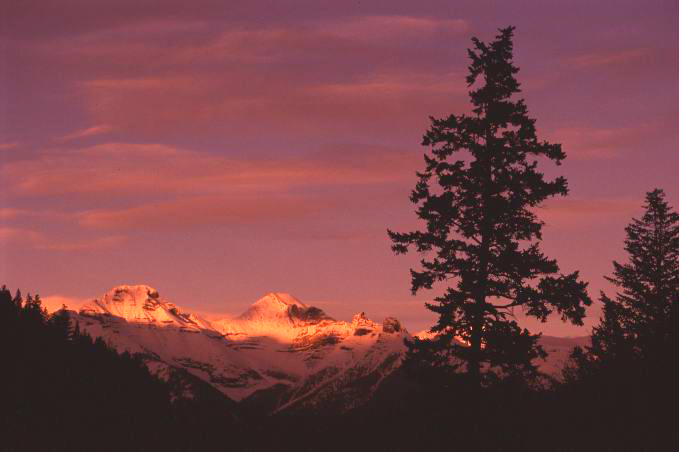
On several of the roads through the park, we encountered Big Horn Sheep.
There were
small herds and even a couple of solitary rams grazing in grassy fields.
These animals were
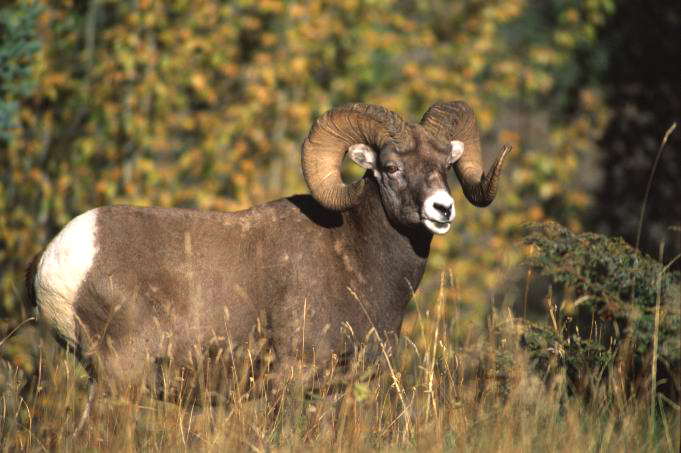
habituated to humans and our group was able to move in quite close on
several occasions for
some special photo sessions. The challenge here was to get in position
with a telephoto lens
so that the background scenery was beautiful. This was a challenge, because
the available
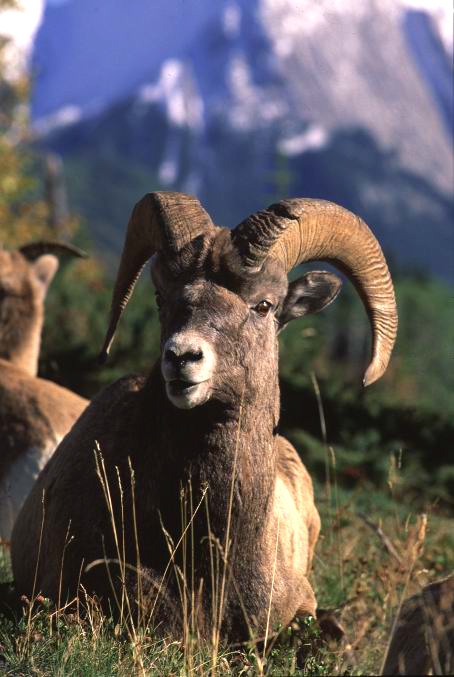
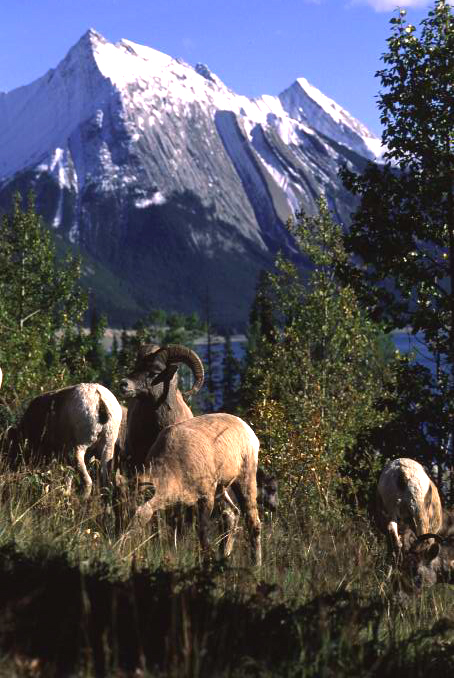
light was at a certain angle and of course the animals kept turning and
moving about. This
created challenges to combine either a group of sheep or a solitary individual
with some
dramatic background. By using a telelphoto lens, I was able to compress
the sheep and the
mountain background together.
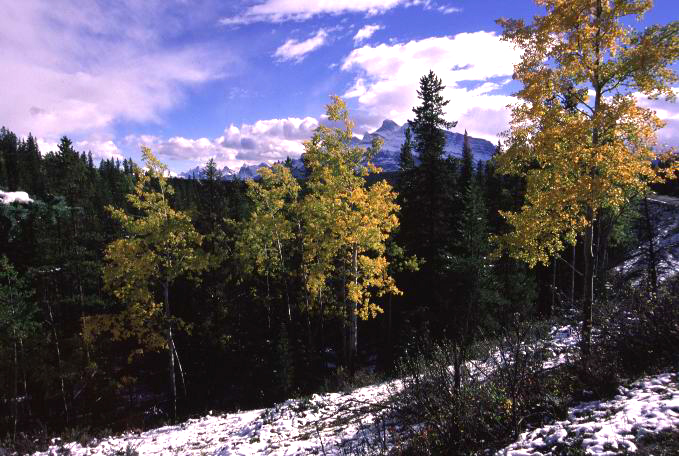
As we drove around the outskirts of Jasper and on into the National Park
there was
always the expectation of seeing some sort of wildlife. Each of us had
our telephoto lens
attached to the camera so that when the action was on, it was a simple
matter to pull out the camera, snap it onto the tripod and we were ready
to shoot. Wildlife shooting is very unpredictable and this just adds to
the excitement and fun. You just never know what lies
around the next bend so it’s important to have your equipment ready.
We encountered moose a few times and this can be a dangerous situation
if you fail to
keep a safe distance. We came upon a large bull on the opposite side of
a river and this was
a very safe situation. I used a 1.5 X teleconverter on my 400mm and was
able to secure
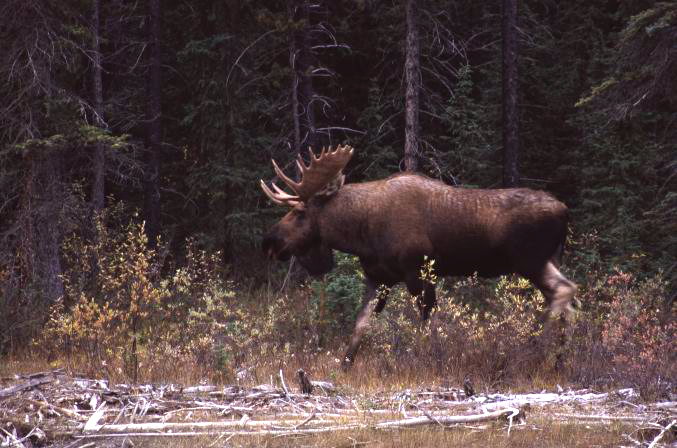
a dozen photos of this huge beast without fear of being attacked. Phil
and I tracked him for
about a half mile as he walked the opposite shore, but suddenly he turned
and disappeared
into the dark recesses of the forest and was gone.
On another occasion we found a huge bull resting in a glen and this was
a completely
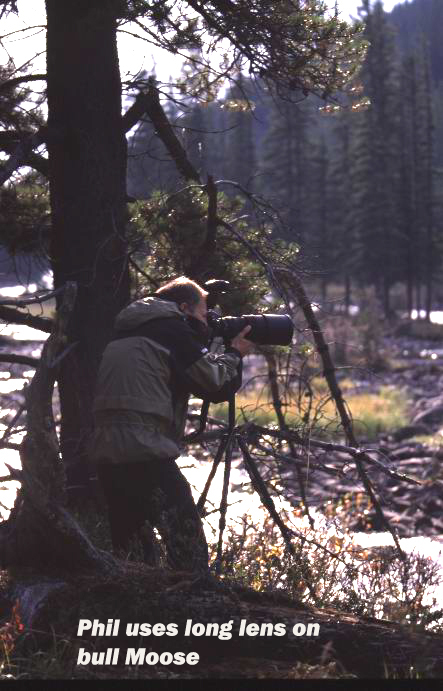
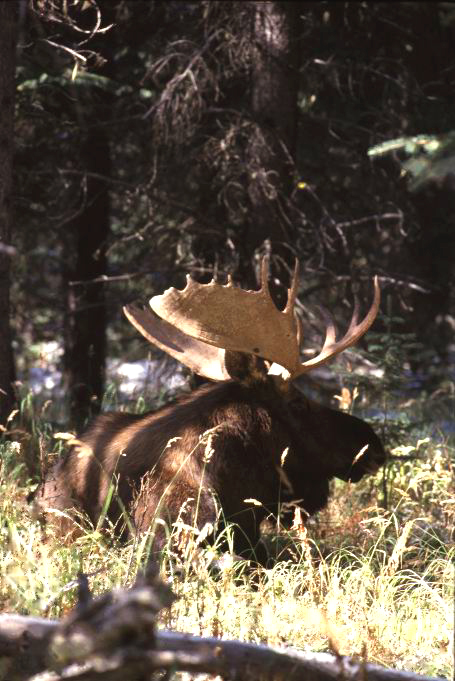
different experience. We dared not speak, only gesturing with hand signals
and moving ever
so slowly. We took our shots when we felt the big bull was relaxed and
when he made some
head movements we backed off into the tree line to allow him “space.”
“Working” an elk herd is much the same. Stalk with extreme
caution! At this time of year the bulls are mating with the does and protecting
their herds from intruding males, who
will offer a challenge. These huge animals can be very aggressive if provoked
and we watched
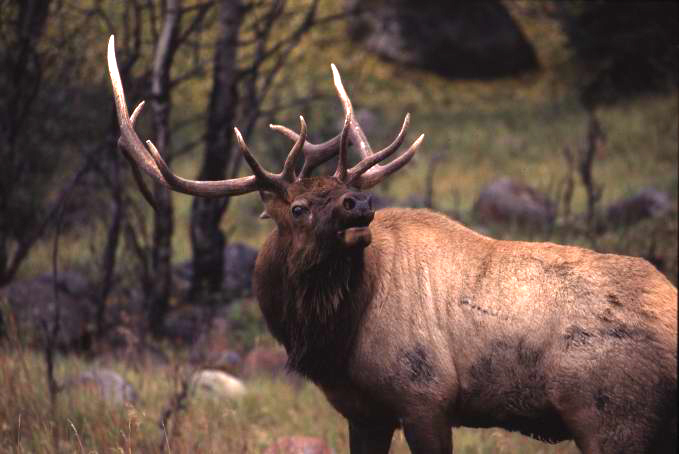
with concern when a tourist bus packed with 50 frenzied, camera wielding
people ran into a
field to get their snapshots of a herd of elk. Luckily, the bull only
“mock charged” the group
and scared them right back onto the bus. Many people seem to get the sense
that these animals
are in a “zoo” situation and can be approached without caution.
Nothing can be further from
the truth. Wildlife must be respected at all times.
When approaching a herd of elk, we also took into consideration the direction
of light.
This was easier in an open field and we would approach with the light
over our shoulder. This
allowed for “front lighting” on the animals, which illuminated
the torso and head nicely and
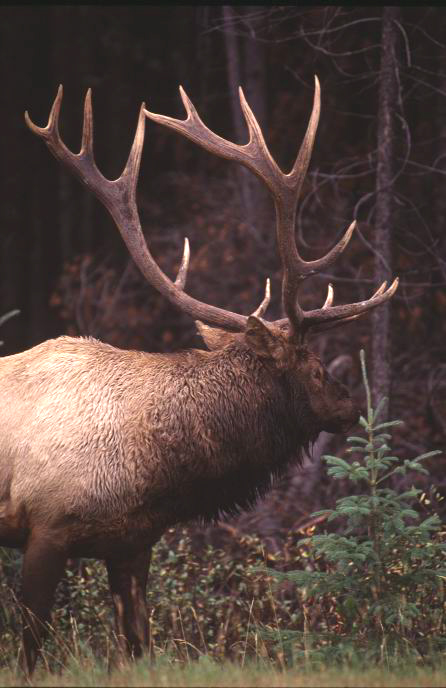
most importantly gave a nice highlight in the eye. We didn’t use
our flash on these animals as
we didn’t want to “spook” them in any way. Considering
the aggressive state the males were
in, it wasn’t prudent to take any chances of provoking an attack.
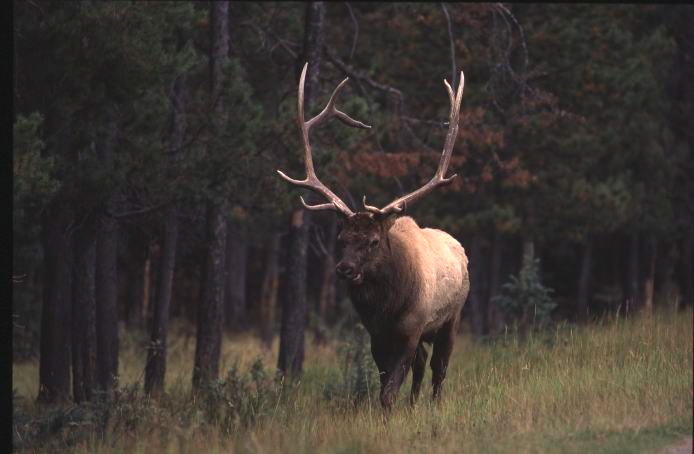
Most of the time I had two cameras set with telephoto lenses. My 400mm
was on one and my 100 – 300mm zoom on the other. This gave me some
quick choices for image size. My lenses have the “quick release
plates” mounted on the bottom and these allow for quick changes
onto the tripod. Even at times when we were more interested in creating
scenic
landscapes, one camera was always sitting by with a telephoto ready for
that unexpected
wildlife moment. In Jasper, the photographer has to be always ready for
the unexpected
animal encounter.
Our most elusive animals were the mountain goats. We could see them grazing
high
up on the mountain meadows far out of reach of any telephoto lens. They
appeared as tiny
white specks upon a green velvet background and it seemed as if we would
never be able to
photograph these “sticky toed” mountaineers, who can scamper
right up vertical cliffs to
avoid predators and photographers.
But, we had one day when Phil and I made a climb into the realm of the
mountain
goat and came back with a few reasonably good photos. ( See
“The Lure of High Adventure”)
The article on our adventure with mountain goats in the favorite
Places Section of this website.
Jasper is high on my list for the ultimate nature photography experience.
Whether you
favor scenic landscapes or close encounters with magnificent large animals
this is the place to
come, especially in early October.
